
 |
|
|
| by Jillian Moreno |
|
There is nothing like knitting with handspun yarn, no more
unique yarn to knit with than handspun. It feels livelier than
millspun yarn, behaves differently. |
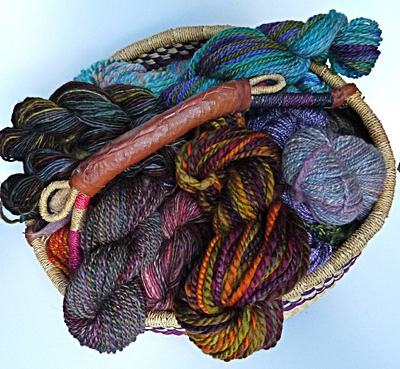 Know Your Yarn What are you working with? You fell in love with this yarn because of the color or the feel, what else can you find out? Before you start knitting, it would be good to know all or some of these things: What kind of fiber is it? What kind of spin is it? 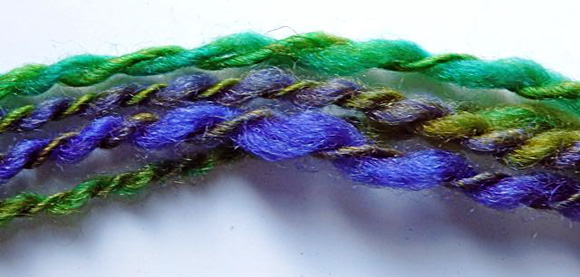
How many plies does it have? How much yardage is there? What is the gauge - approximately? You can figure it out with Wraps Per Inch (WPI) Before I talk about WPI, there’s something important
to do: Wash your yarn. Unless you yourself
have just finished spinning and plying
and have set your yarn, it’s a good idea to give it a
wash. If you’ve purchased
it, the seller may not have washed
it. If you’ve dug
it out from your handspun stash, it
may be flat and sad. Washing your yarn does a couple of things. It sets
the twist in your yarn and it allows
the yarn to relax and bloom if it wants
to. A woolen yarn
can change a lot from the time it is
spun to after washing, as much as 2
or 3 wraps per inch or more, which
changes the gauge. Wash your yarn. 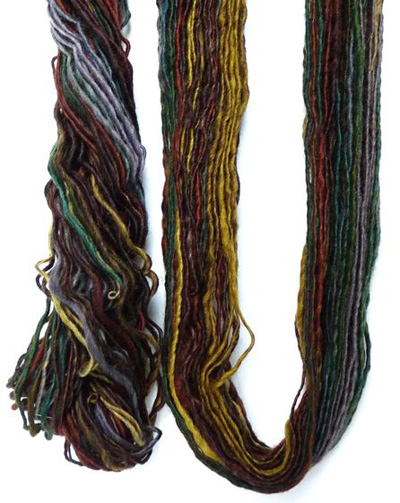
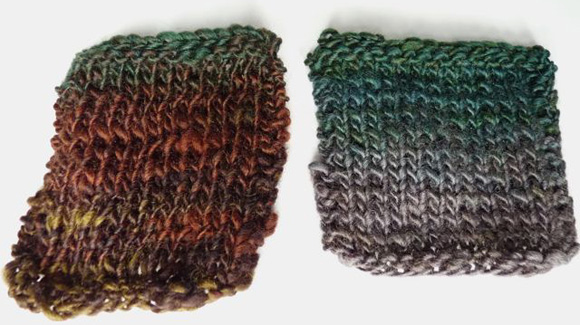
Now on to WPI. If you know the Wraps Per Inch (WPI) of a yarn, you can find a starting point for the gauge of your yarn. Here’s a handy-dandy chart:
Wraps Per Inch (WPI) measures how many times a yarn can be wrapped in a 1" length. To determine WPI using a ruler or a WPI gauge, wrap yarn snugly (not tightly) around ruler for 1”. Yarn should just touch each other, not be crammed together.
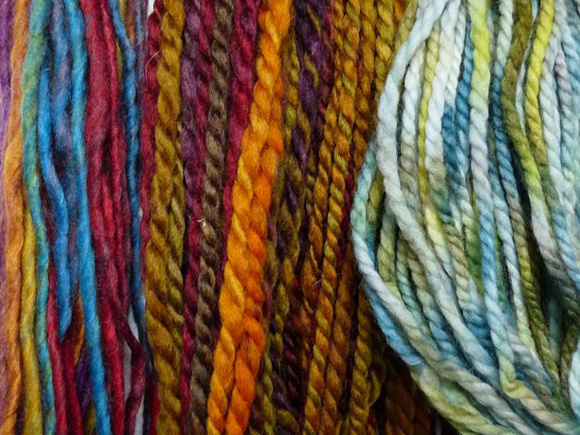
Spend a lot of time swatching, more than you would for a commercial yarn, and knit a bigger swatch. Handspun yarn is rarely uniform. That’s one thing I love about it, but it can make me crazy when it comes to gauge. I like a 6-to-8" swatch for handspun. After you determine the WPI for your yarn try a needle one to two sizes bigger than you would normally use for a yarn of that type (according to the chart above). Handspun yarn is somehow bigger than commercial yarn of the same general size. It’s due to the variation in handspun and to the fact that commercial yarns are made by machines and tend to be compressed.
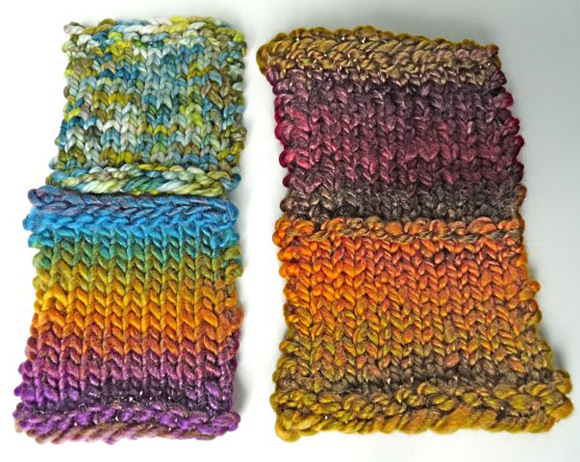
All three bulky yarns knit to a 3 stitch to the inch gauge, a happy gauge for all three, mostly. The swatches on the left are the commercial yarns. The swatch on the right is the handspun. The bottom part of the handspun swatch is the yarn knit at 3 stitches to the inch -- looks fine, maybe a little tight. The top part of the swatch is the yarn knit at 2 stitches to the inch -- a much happier fabric.
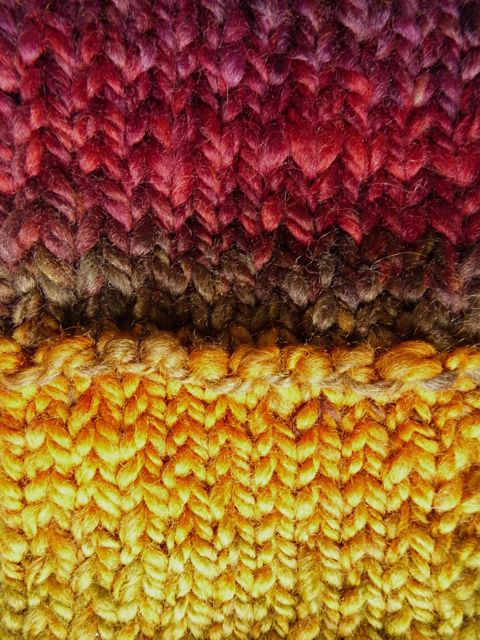
Vary your needle size and stitch patterns as you swatch, you
will be surprised and excited by how your handspun behaves.
If it is a variegated yarn, you’ll also see how the colors
behave or misbehave. I have many skeins of yarn that I didn’t
like how the colors looked in the skein, but turned beautiful
as knitted fabric and the opposite, too. Swatching is
the best way to get to know handspun
If you have your heart set on using handspun in a sweater but don’t have enough, use it as an accent. Use a commercial yarn as a base, in a color that will make your handspun yarn sing, and have your hand spun for a yoke, button band, cuffs or collar. A great example is Ann Weaver’s sweater King of Confidence [shown below]: the main part of the sweater is knit in Cascade 200; the yoke – handspun. 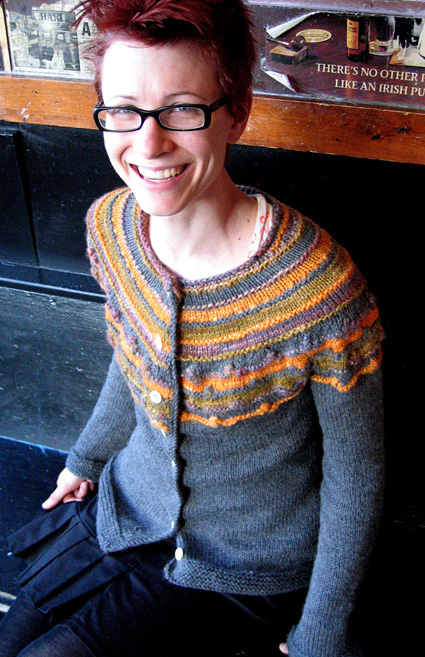
|
| ABOUT THE AUTHOR |
 Jillian wants to thank Three Waters Farm for the gorgeous BFL fiber used in this article. |
| © 2011 Jillian Moreno. Contact Jillian |